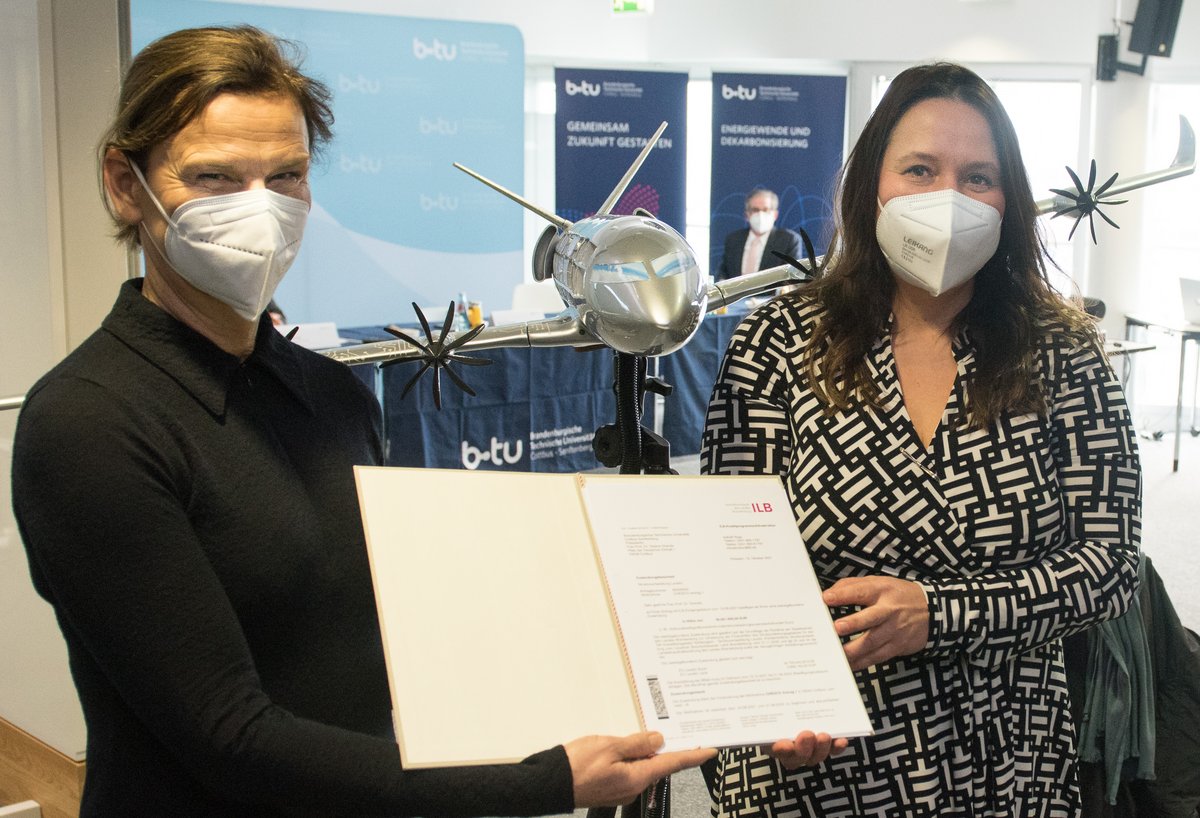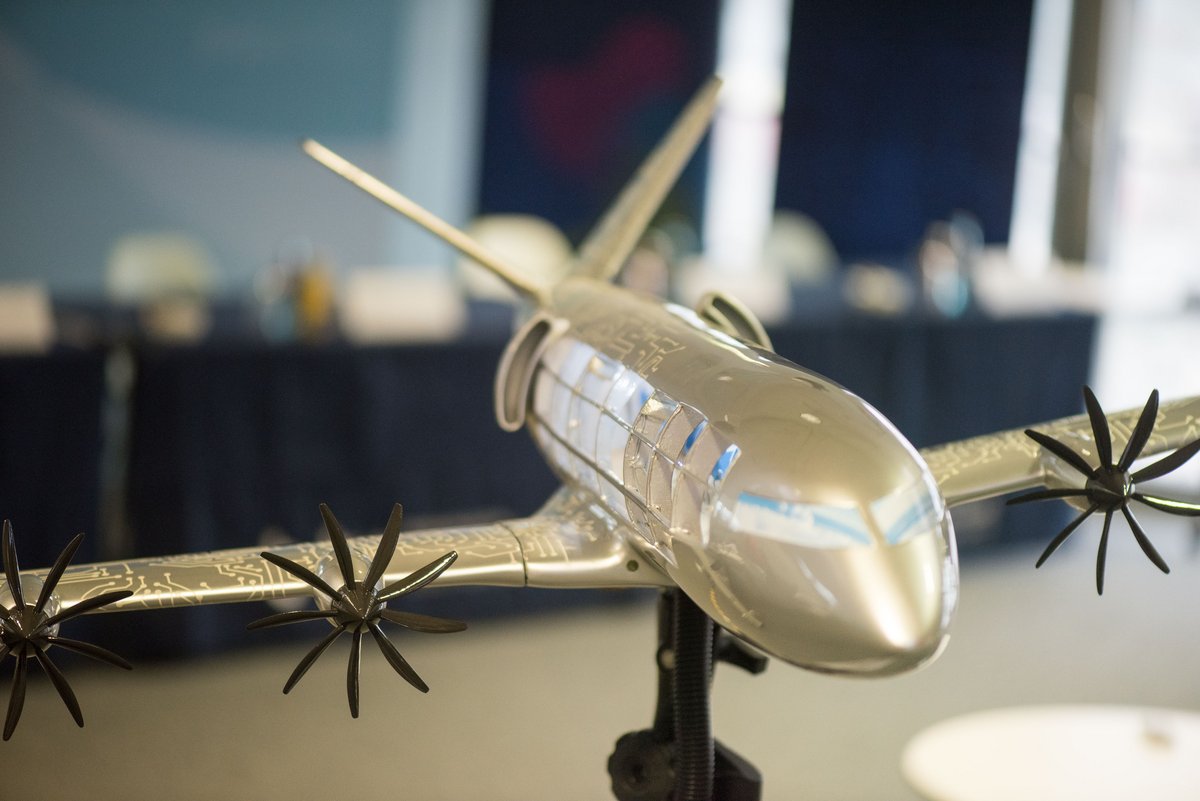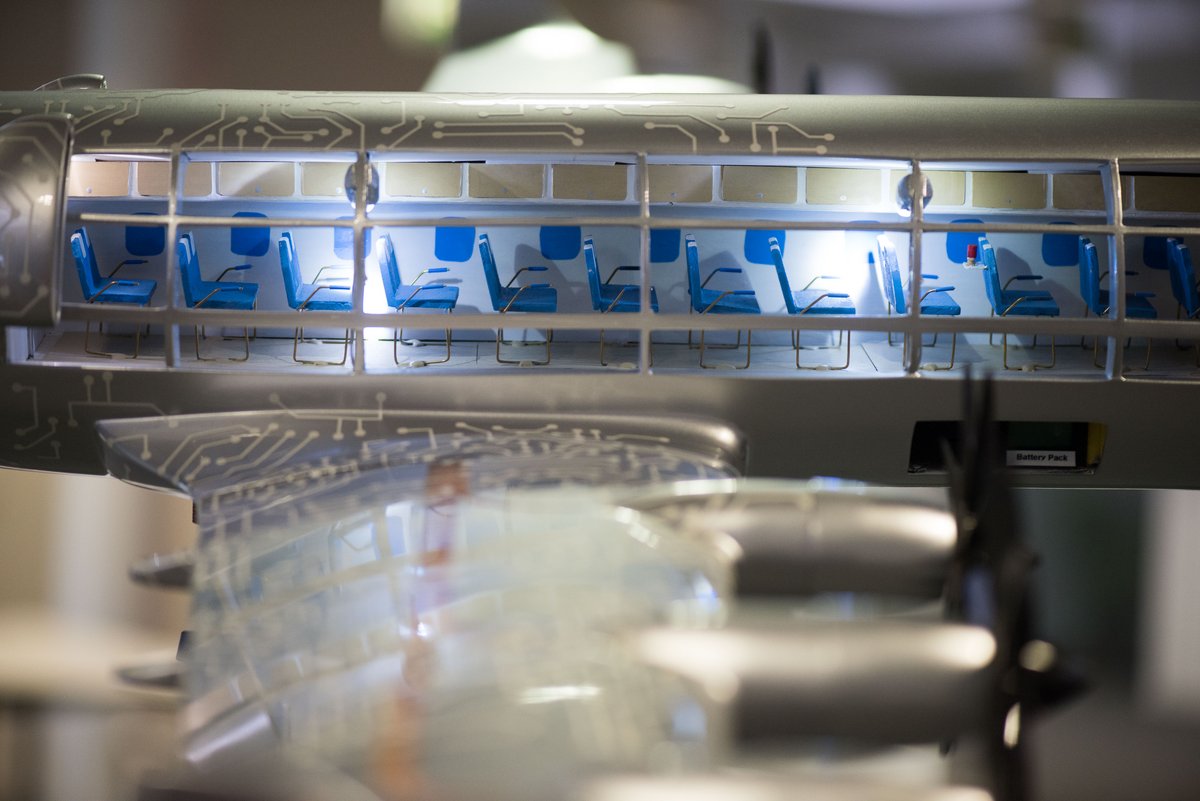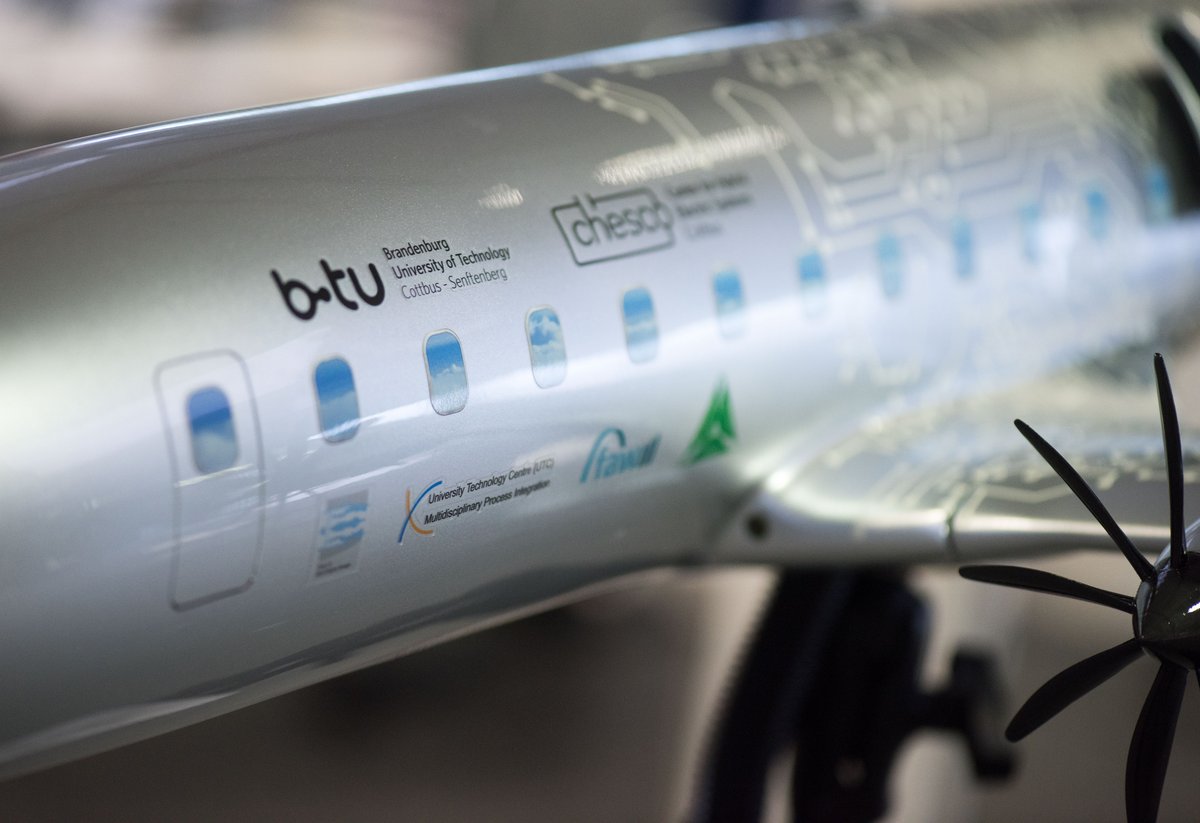Hybrid flying: BTU receives almost 39 million euros for CHESCO
Starting signal for the CHESCO project as part of the structural development of the Lausitz region: Brandenburg's Minister of Science and Research, Dr Manja Schüle, today handed over a grant notification from the Investitionsbank des Landes Brandenburg (ILB) for around 38.56 million euros for the "Center for Hybrid Electric Systems Cottbus" (CHESCO for short) project to the President of the Brandenburg University of Technology Cottbus-Senftenberg, Prof. Dr Gesine Grande. This means that the establishment of a centre for research into hybrid-electric drives and systems can begin at the BTU. In the future, climate-friendly flight propulsion systems for short and medium distances will be planned, tested and implemented in the research and cooperation centre. In addition to Minister Schüle and BTU President Grande, the CHESCO project leaders Prof. Dr.-Ing. Klaus Höschler and Prof. Dr.-Ing. Georg Möhlenkamp as well as Dr. Jörg Au, Chief Engineer Business Aviation and Engineering Director Rolls-Royce Germany, took part in the presentation of the project.
Science and Research Minister Dr Manja Schüle: "CHESCO is a mega-project for Lusatia. Here, cutting-edge research is tackling one of the greatest challenges of our time: the development of climate-friendly aircraft engines. And: CHESCO can become a pull factor for the entire region. The centre will not be a hermetically sealed ivory tower in which excellent minds silently tinker away. CHESCO wants to provide concrete answers: with the region, but beyond it. The centre is to become a hub for cooperation projects with regional business partners, researchers and scientists in co-working spaces. Here we benefit from the existing structures of the BTU, from whose ranks the project has emerged. In Cottbus we already have an excellent science location with the necessary management know-how, a proven infrastructure and a constantly developing regional and international network. And with Rolls-Royce, we have an excellent partner in the field of electric drives - to highlight just one of the many strong players. CHESCO will be a laboratory for innovation and a hotbed of transformation in the heart of Lusatia. I am convinced that it is not those who invest in industrial jobs, but those who invest in innovation, who invest in the future."
BTU President Prof. Dr. Gesine Grande: "At the BTU we are researching the mobility of the future. Hybrid-electric aircraft propulsion systems are an important building block for the further reduction of harmful emissions. At CHESCO, renowned scientists are working together with international partners in the future Lausitz Science Park on innovative technologies that can sustainably change the aviation and vehicle industries and thus reduce the consequences of climate change."
Prof. Dr.-Ing. Georg Möhlenkamp, Head of the BTU Department of Power Electronics and Drive Systems: "Electric motors are very efficient and powerful. In the foreseeable future, only smaller aircraft with up to four passengers will be able to fly under a range of 200 kilometres purely on electric power. Compared to paraffin, the energy density of currently available batteries is still too low to supply larger commercial aircraft during a medium-haul flight. In addition, these designs will reduce noise for people on the ground. They will hardly hear the machines in the air any more."
Prof. Dr.-Ing. Klaus Höschler, Head of the BTU Department of Aircraft Engine Design: "Until now, gas turbine engines in conventional aircraft provided both power generation and thrust. With hybrid-electric engines, these processes can be decoupled. This opens up innovative design possibilities. The turbines no longer hang under the wings, but can be housed inside the aircraft, and thrust is generated by electrically driven propellers. For additional propulsion, for example during take-off, battery-powered electric motors with propellers can be switched on, which can also recuperate electrical energy during descent."
Dr Jörg Au, Managing Director Engineering, Rolls-Royce Germany: "We are looking forward to building a globally unique industrial ecosystem for low-emission, hybrid-electric aircraft engines here in Brandenburg together with other partners. The fact that we can count on the continued support of the German government and the state of Brandenburg in this endeavour is crucial in helping us to meet our goals for a sustainable and CO2-neutral future by 2050. Building on the excellent capabilities of our Electrical teams in Bavaria and Brandenburg, the establishment of development, test and production facilities in Dahlewitz and Lusatia will enable us to deliver hybrid-electric propulsion systems for the next era of aviation."
Heiko Jahn, Managing Director of Wirtschaftsregion Lausitz GmbH (WRL): "CHESCO is the largest project to date that has been qualified in the workshop process of Wirtschaftsregion Lausitz GmbH. Such a centre for the development and testing of low-emission drive systems is so far unique in Europe. It contributes to the development of a modern and innovative scientific landscape in Lusatia and - also in the context of the planned Science Park at the BTU - will develop into a magnet for further science-related and entrepreneurial settlements. This also fulfils an objective of the Development Strategy 2050."
Within the framework of the "Center for Hybrid Electric Systems Cottbus" (CHESCO), BTU scientists led by Prof. Dr.-Ing. Klaus Höschler and Prof. Dr.-Ing. Georg Möhlenkamp will work on solutions for propulsion systems for aviation, but also for rail, road and off-road. Hybrid-electric drives - and thus the combination of gas turbine with generator or fuel cell, battery and electric motor - enable a variety of different drive systems. New aircraft designs in short- and medium-haul traffic could significantly reduce emissions of climate-damaging gases in the future. Scientists expect savings of 20 to 30 percent. But developments in aviation are lengthy and technological changes are subject to high safety standards. CHESCO aims to accelerate the development time of innovative propulsion technologies by centrally bundling research and manufacturing competencies: A scientific facility, the Research Centre, is used to develop the design of components and systems. In the Fast-Make Electrification Research Center (f-merc), researchers create prototypes that are tested in the Test Center. In cooperation with the Institute for Electrified Aerospace Propulsion Systems of the German Aerospace Center (DLR), several Fraunhofer Institutes and industrial partners such as Rolls-Royce Germany, an integrated research centre will be created in the Technology and Industrial Park in the north of Cottbus by 2026. In the future, up to 400 employees will work at CHESCO.
CHESCO is being financed through the Brandenburg State Chancellery's funding guideline for the structural development of Lusatia, with the funds coming from the federal government's Structural Strengthening Act. As part of the funding procedure, the project went through a workshop process organised by the state structural development company "Wirtschaftsregion Lausitz GmbH". In June 2021, the eligibility of the CHESCO project for funding was confirmed by the Lusatia Interministerial Working Group (IMAG) of the state government. Over the next five years, a total of 238 million euros is to flow into the construction and equipping of the research centre. The Investment Bank of the State of Brandenburg (ILB) has now approved the first sub-project with around 39 million euros and issued the funding notification.
Kontakt
Stabsstelle Kommunikation und Marketing
T +49 (0) 355 69-3206
marita.mueller(at)b-tu.de
Stabsstelle Kommunikation und Marketing
T +49 (0) 355 69-2115
kristin.ebert(at)b-tu.de




